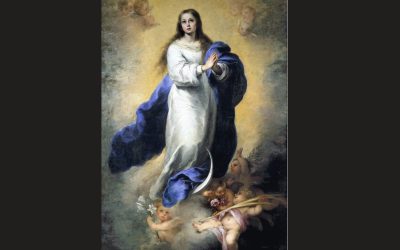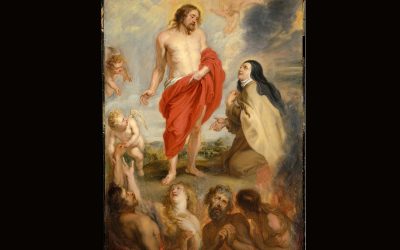By Teresa Kidron
“She [Mary] gave birth to her firstborn son. She wrapped him in swaddling clothes and laid him in a manger, because there was no room for them in the inn.”
Luke 2:7
This brief and stark account of the birth of our Savior is core to understanding the whole of our Catholic faith.
A stable is a shelter for animals that work for man. There they feed and rest, so that they can work the next day. The earthliness of a stable became the birthing and resting place for Jesus, his Mother Mary, and St. Joseph. It was a safe and “private” place for the Holy Family to wonder at the birth of the Messiah.
Mary wrapped Jesus in swaddling clothes. Nativity scenes and paintings often do not depict Jesus swaddled, wrapped snugly in a light fabric for warmth and confinement, to mimic the confines of the womb. Instead, the image of our Savior is made sentimental—Jesus has open eyes, His hands are extended, and He is barely clothed.
But the point of the Scripture reading is that Jesus was a helpless infant. He took on our mortal flesh—the ultimate act of humility for God—and was born of the Virgin in a most meager place. His comfort was swaddling clothes, Mary and Joseph to care for Him, and the welcome warmth of the animals.
Jesus’ birth in the stable with the animals is no accident. The animals would not refuse Him, as so many people did in His thirty-three years on earth. As St. John writes in his Gospel:
“He was in the world, and the world came to be through him, but the world did not know him. He came to what was his own, but his own people did not accept him.”
John 1:10-11
Our Blessed Mother laid Jesus in a manger, the food box of animals. This foreshadows Jesus becoming the Bread of Life for us. Mary knew that Jesus was born for us. Her role as Mother was to give the Creator and Savior of the world to all who would welcome and accept Him as their Savior and Lord.
The final detail of this brief Scripture account of Jesus’ birth given by St. Luke is also no accident:
“. . .because there was no room for them in the inn.”
This detail should pain us deeply.
It tells us to make room for Jesus in our lives. Let this room have the quiet and peace of the stable of Jesus’ birth. Let us open our hearts and fill our minds and purify our souls with the mystery of Jesus, our Savior and Redeemer, coming to us as a small, vulnerable, needy baby. Then, like Mary and Joseph, though we may have simple means, we will also have the wealth and richness of everlasting life.
“But to those who did accept him he gave power to become children of God, to those who believe in his name, who were born not by natural generation nor by human choice nor by a man’s decision but of God.”
John 1:12-13

Teresa Kidron
Wife, mother, and grandmother, Teresa enjoys the company of family and friends, and the hobbies of sewing and gardening.






Beautiful reminders. Thank you. Merry Christmas! God bless, Deacon Tom
Thank you Teresa for your wisdom and beautiful thoughts. The passages from Sacred Scripture were so well chosen to illustrate the contrast of the humble stable with “the wealth sand richness of everlasting life.”